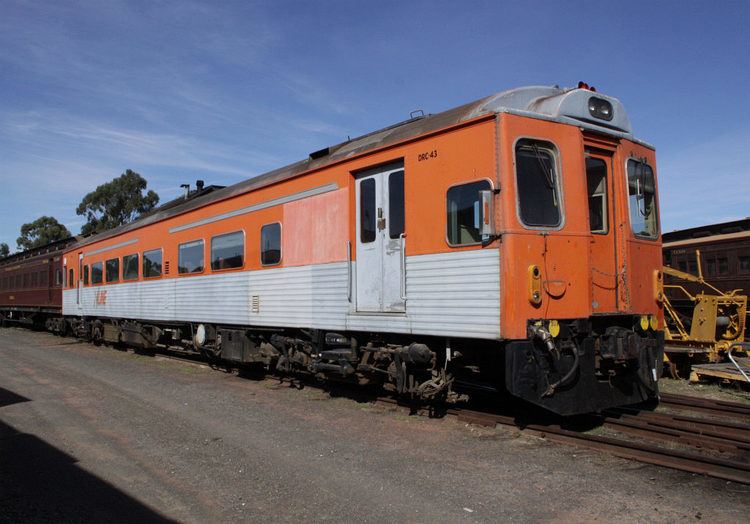Constructed 1971-1973 Number built 4 | Entered service 1971-1995 Fleet numbers DRC40-DRC43 | |
 | ||
The DRC (Diesel Rail Car) was a class of railmotor operated by the Victorian Railways on its country rail network Victoria, Australia. The cars were built by Tulloch Limited in New South Wales and featured aluminum and steel construction, air-conditioning, and twin diesel engines with hydraulic transmissions.
Contents
History
The first railcars of this type were built for the New South Wales Government Railways as the 1200 class railcars in 1970. The Victorian Railways decided to order two railcars of their own to replace the 280hp Walker railmotors then in use. The first railcar entered service in May 1971 as DRC40, followed by DRC41 on November 1971. The cars suffered numerous failures in service, and by 1974 the Public Transport Commission had decided to withdraw their fleet.
The Victorian Railways purchased two of the NSW 1200-class cars and modified them for Victorian use in June 1974. The eight remaining railcars were converted to loco hauled carriages in 1982 and used on the South Coast Daylight Express until January 1991 and Moss Vale and Goulburn services until November 1993. They entered service as DRC42 (formerly PCH 1224) and DRC43 (formerly PCH 1227) in August and December 1975 respectively. By 1978 the railcars still had issues with reliability, with a modification program being carried out at the Bendigo Workshops in 1983/84. Four MTH carriages were converted from Harris suburban carriages in 1984, for use as trailers with the DRC railcars.
In 1980s the DRC railcars were the fastest train in Australia by average speed, running 107 kilometres from Ararat to Hamilton on Mondays and Saturdays in 72 minutes, for an average speed of 89 km/h. A regular usage of the railcars was the Stony Point service from 1984 when passenger services were reintroduced, but regular failures saw them replaced by locomotive hauled trains by the early 1990s. The DRCs were used on the Leongatha line for a few years when the line reopened in 1984 but were replaced by P Class locomotives hauled with three MTH carriages. The unreliability issues were later solved, but the fleet was withdrawn in June 1995 with the introduction of the new Sprinter railcars.
Technical details
The features of the DRC railcar. From the No.1 End:
No.2 end:
Today
DRC40 is preserved and operational at the Daylesford Spa Country Railway while DRC43 is stored and deactivated at the Seymour Railway Heritage Centre. DRC 41 and 42 are privately owned and stored at Newport Workshops.
HO Scale
In 2013, Trainbuilder released a series of DRC railmotors for $1,195 each. The group included DRC40-43 in original unpainted aluminium, DRC's 40, 41 and 42 in V/Line and DRC 43 in VicRail. At the same time, small quantities of New South Wales PCH railmotors 1221, 1224 and 1227 were released.
